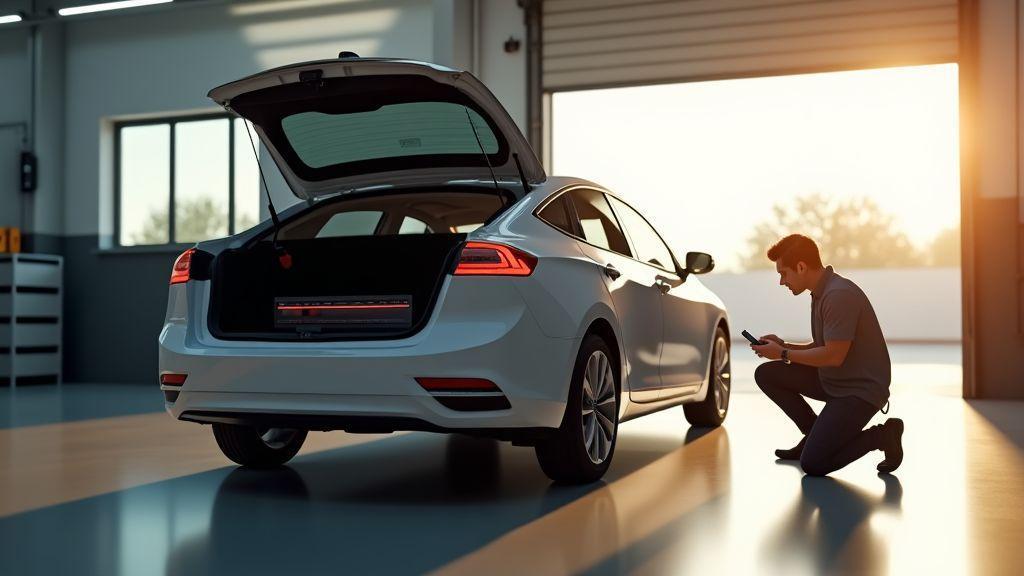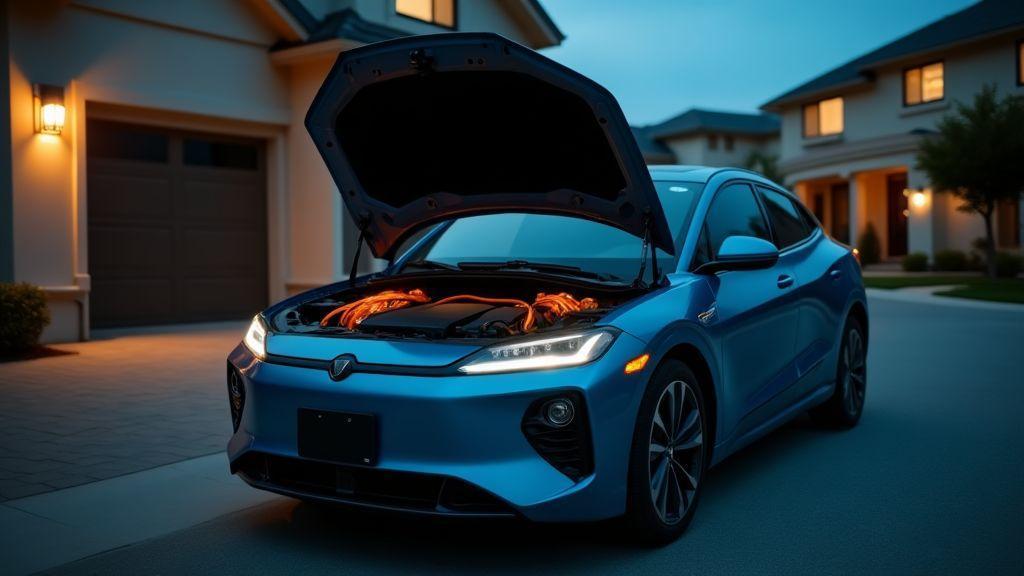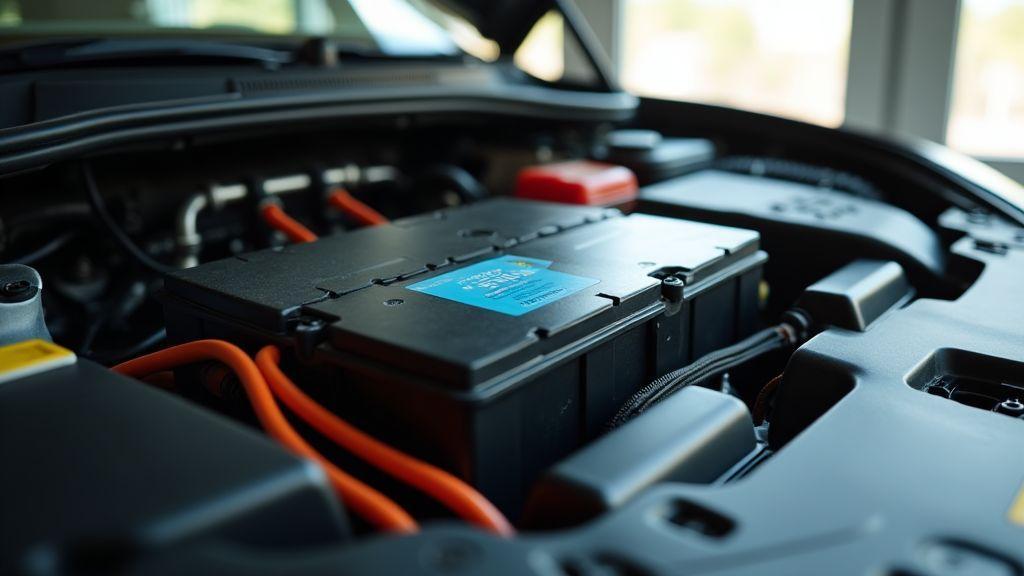Hybrid Car Battery Lifespan: What You Need to Know
You will get a clear, practical guide about typical lifespan and mileage expectations, what manufacturers and studies report, and the main factors that make batteries wear faster like heat and charge cycles. You’ll learn how driving habits and charging patterns change battery life, the common signs of failure and what to do right away, simple maintenance steps, how warranty and replacement costs work, and safe options for reconditioning, recycling, and end of life. This guide — Hybrid Car Battery Lifespan: What You Need to Know — keeps the advice actionable and easy to follow.
Key Takeaway
- You can make the battery last longer with gentle driving and regular service
- Avoid extreme heat and cold that harm the battery
- Expect gradual loss of EV range as the battery ages
- Monitor battery health during routine checks
- Plan for replacement costs eventually

Typical hybrid car battery lifespan and mileage estimates
Hybrid batteries are built to last. On average, a well-maintained hybrid battery delivers solid performance for many years—think of it as a long-distance runner that slows a bit over time but keeps going with steady care.
Wear depends on use. Short stop-and-go trips, extreme temperatures, and heavy loads shave years off life faster than steady highway miles. Where you buy replacement parts also matters: some batteries can be repaired or refurbished for less than a full swap. Knowing the typical lifespan helps decide whether to buy extended warranty coverage, shop for refurbished packs, or plan for replacement. For more resources and buying guides, see the Meridian Pioneer home page.
How long do hybrid batteries last on average
Most hybrid batteries last between about 8 and 15 years in real-world use. Many manufacturers back batteries with 8–10 year warranties, and many packs still hold useful capacity well past warranty life if treated properly. Factors that change longevity include driving patterns, climate, battery chemistry, and charge behavior. For government research and lifespan context, see real-world EV battery lifespan estimates.
Key factors:
- Typical daily trip length and city vs. highway mix
- Climate extremes and how often the car sits in heat or cold
- Age, design of the battery pack, and vehicle maintenance
Years versus miles: what you should expect
Warranties are often framed in years and miles (for example, 8 years/100,000 miles). In practice, many batteries hit 150,000–200,000 miles before capacity drops enough to prompt replacement. If you drive 12,000–15,000 miles a year, expect the battery to last close to or beyond a decade in many cases.
When buying used, consider both age and miles: a five-year-old hybrid with 40,000 miles may have plenty of life left; a three-year-old car with 120,000 city miles may need service sooner.
| Example model (typical) | Common factory warranty | Typical real-world lifespan (years) | Typical miles before significant decline |
|---|---|---|---|
| Toyota Prius family | 8 yr / 100,000 mi (some regions 10/150k) | 8–15 years | 150,000–200,000 mi |
| Honda Insight / Accord hybrid | 8 yr / 100,000 mi | 8–12 years | 120,000–180,000 mi |
| Ford Fusion Hybrid (older models) | 8 yr / 100,000 mi | 7–12 years | 100,000–170,000 mi |
Key manufacturer and study figures
Major makers commonly back hybrid batteries with 8–10 year or 100,000–150,000 mile warranties, and long-term studies frequently find packs lasting well beyond warranty in typical conditions. Warranties protect early life; real-world data shows many batteries keep working for years after.
Factors affecting hybrid battery longevity you should know
Hybrid Car Battery Lifespan: What You Need to Know starts with a few simple ideas. Your battery is like a marathon runner, not a sprinter. Age, heat, cycle count, and driving style all wear on it bit by bit. Each trip adds another lap.
You can see big effects from small choices. High heat speeds chemical reactions and shortens life. Deep discharge cycles stress the cells. Long storage without use or frequent fast charging also increases wear. Regular maintenance, moderate charging, and parking in shade slow the decline.
| Factor | Typical effect on battery life | What you can do |
|---|---|---|
| High heat | Speeds chemical wear, lowers capacity faster | Park in shade, use climate control when needed |
| Charge/discharge cycles | Each cycle reduces usable life | Avoid deep discharges; keep mid-level charge when possible |
| Frequent fast charging | Adds stress and heat | Use fast charge sparingly; prefer regular charging |
| Long storage or infrequent use | Capacity loss and imbalance | Start and drive periodically; store at moderate SOC |
Hybrid battery degradation: heat and cycles
Heat is a top culprit. High temperatures accelerate internal reactions and accelerate capacity loss. Park in shade or a garage, and avoid leaving the car baking in direct sun. Cycle count matters too: shallow, frequent top-ups are kinder than repeated deep drains. For a technical explanation, read technical causes of battery degradation explained.
How driving habits and charging patterns change life
Hard acceleration, towing, and heavy loads stress the battery and raise operating temperature. Gentle acceleration and steady speeds keep the pack happier and cooler. Regular slow charging keeps cell temperatures lower and balances the pack; daily DC fast charging speeds wear. Occasional fast charging for trips is fine—daily reliance shortens lifespan.
Environmental and usage impacts
Cold reduces performance temporarily but is usually less damaging than heat; repeated freeze-thaw and salty, humid air can corrode connections. High mileage, stop-and-go driving, and heavy accessory use (A/C, heaters, audio) all nudge the battery toward earlier replacement.

Signs of hybrid battery failure and when you must act
Hybrid battery trouble often starts small and then grows fast. You may notice the car losing power on hills, EV-only range dropping, or the dash lighting up with battery warnings. Treat these like a smoke alarm — check them right away so you don’t get stranded or face a bigger repair bill. For practical consumer guidance, see recognizing hybrid battery warning signs.
Age, mileage, and weather matter. If your car is over five to eight years old or you drive frequently in extreme temperatures, watch symptoms closely. Act sooner rather than later: a failing battery can trigger limp mode or sudden drops in fuel economy. Fixing a small issue often costs much less than replacing an entire pack.
Common signs of hybrid battery failure to watch for
Warning lights are the simplest sign. Repeated or persistent lights mean a diagnostic scan is needed. Other signs: loss of EV-only driving, reduced acceleration, sudden fuel-economy drops, limp mode, or unusual noises from the hybrid system.
| Symptom | Likely meaning | Urgency |
|---|---|---|
| Hybrid system or check engine lights | Fault codes logged; could be battery module or sensor | High — scan now |
| Loss of EV-only driving or reduced range | Battery capacity is declining | Medium-high — test battery |
| Sudden drop in fuel economy | Battery not supporting electric assist | Medium — check soon |
| Limp mode or reduced power | Safety response to serious fault | High — stop driving, diagnose |
| Strange noises or warning chimes | Electrical component or coolant issue | Medium — inspect quickly |
How you can diagnose issues with OBD and dealer checks
Start with an OBD-II scan tool that supports hybrid-specific codes or use a brand-specific scanner/app. Record codes and when they appear. A dealer or hybrid specialist will run high-voltage battery tests, capacity checks, module tests, and state-of-charge measurements under load. They can also check software updates and perform rebalancing or module replacement when possible. If under warranty, these checks are critical — and if you need assistance arranging service, visit our contact page.
Before sharing vehicle data with third-party apps or diagnostic services, review privacy practices to understand how your information is used; you can find our site privacy information at the privacy policy.
What to do immediately if you see warning signs
- Move to a safe spot and turn off nonessential systems.
- Note the lights, symptoms, and recent conditions (heat, long drive).
- Use a scanner if you have one, or tow the car to a hybrid specialist.
- Avoid long trips until the battery is tested and fixed.
- Ask the shop for a battery health report and replacement cost estimate.
Hybrid battery maintenance tips to extend hybrid battery life
Treat the hybrid battery like a partner on a long trip: avoid extremes. Heat and deep discharges are the real enemies; park in shade, use cooling systems as needed, and avoid repeated full-throttle launches. Small, regular habits add up—battery management helps, but your choices matter too. Researchers and practical guidance are summarized in practical maintenance to reduce degradation.
Regular service matters because the cooling system, 12V auxiliary battery, and electrical connectors all affect the main pack. If the cooling loop is clogged or the 12V battery is weak, the hybrid system works harder and the pack heats up. Have coolant, connectors, and software updates checked on schedule.
If the car will sit for weeks, leave it at a moderate state of charge and drive it occasionally. In hot or cold climates, try to park in a garage or covered spot. Hybrid Car Battery Lifespan: What You Need to Know emphasizes that small, regular actions extend battery life more than rare dramatic fixes.
Simple maintenance tips you can follow daily
- Check for dash warnings and listen for odd noises.
- Keep tires at the correct pressure.
- Park in shade when you can.
- Avoid long idling sessions with no movement.
- Drive a short route weekly if the car sits often.
Driving and storage habits to help extend battery life
Smooth acceleration and steady speeds reduce deep charge-discharge swings. Use regenerative braking smoothly. For storage, aim for a mid-level charge (rough rule: ~40–70%) and start the car or take a short drive every couple of weeks. Store in a temperate spot if possible.
| Condition | Recommended action |
|---|---|
| Short daily use | Park shaded, check dash lights |
| Long idle/storage | Leave at ~40–70% charge, start weekly |
| Hot climates | Park covered, check cooling system |
| Cold climates | Store in garage, avoid letting charge fall too low |
Routine checks and software updates that matter
Have a mechanic check the battery cooling circuit, high-voltage connectors, and the 12V battery on schedule. Manufacturer software updates can change charging patterns or add protections that lengthen life. Keep service records to spot trends before they become failures.

Understanding hybrid battery warranty coverage and replacement cost
Think of the hybrid battery like the heart of your car. Hybrid Car Battery Lifespan: What You Need to Know includes checking warranty fine print—warranties usually cover defects and significant capacity loss for a set number of years or miles. Read the contract so you know what triggers a claim and what doesn’t; consult the manufacturer’s terms of use and warranty language for details.
Warranties vary by maker and region. Many manufacturers offer 8 years or 100,000 miles; some extend to 10 years or 150,000 miles. Coverage can be full replacement, pro-rated, or limited to certain parts of the pack.
A full new pack can run from a few thousand to well over ten thousand dollars. How much you pay depends on the model, OEM vs. aftermarket parts, module vs. full-pack replacement, labor rates, and whether the warranty still applies.
Typical hybrid battery warranty coverage and limits
Factory warranties usually cover manufacturing defects and failures defined by a capacity drop below a certain percent. Warranties rarely cover wear from heavy use, accidents, water damage, or unauthorized modifications. Some are pro-rated after a certain period. Check transfer rules if you plan to sell the car.
Replacement cost ranges and what affects price
Expect a wide price range:
| Vehicle type | Typical new OEM battery cost | Typical refurbished/reman cost |
|---|---|---|
| Compact (e.g., Prius) | $2,000–$4,000 | $1,000–$2,500 |
| Midsize hybrid | $3,000–$6,000 | $1,500–$3,500 |
| Luxury/high-capacity | $8,000–$15,000 | $4,000–$8,000 |
| Labor & diagnostics | $200–$1,200 | $150–$800 |
Costs vary by brand/model, OEM vs. aftermarket, module vs. full pack replacement, labor rates, and freight. Get a correct diagnosis first to avoid wasted expense.
Ways to lower costs with refurbished units or warranty claims
Start with the warranty and a dealer test. Compare options: module-level repairs, certified refurbished packs with short warranties, or remanufactured packs from reputable shops. Keep service records for smoother claims. If buying refurbished, confirm testing, return policy, and any labor warranty.
Hybrid battery reconditioning, recycling, and end-of-life options
You can recondition, reuse, recycle, or replace a battery. Each choice affects cost and environmental impact. Follow a clear path:
- Test the pack for capacity and cell balance.
- Compare reconditioning cost vs replacement price.
- Check local rules and certified recyclers or second-life buyers. You can locate battery recycling and disposal options.
- Decide based on budget, intended use, and environmental priorities.
| Option | Typical cost impact | Lifespan change | Best if |
|---|---|---|---|
| Reconditioning | Lower than new battery | Extends by months to years | You want to save money and get short-to-mid term life |
| Second-life reuse | Can generate value | Gives pack a new purpose | You or a buyer want energy storage, not driving power |
| Recycling | May recover value | Removes pack safely | You want proper disposal and material recovery |
What reconditioning involves and when it helps
Reconditioning starts with capacity and module tests. Shops replace weak cells, rebalance charge, and may update battery management settings. It can be cost-effective when the pack has partial failure or uneven aging; it’s less useful when many modules are dead.
Recycling and second-life uses
Second-life uses turn retired car batteries into storage for homes, farms, or local grids, keeping batteries out of landfills. Recycling recovers metals like nickel, cobalt, and lithium for new batteries or other products, reducing mining needs and emissions. Proper recycling prevents hazardous leaks.
Resale and environmental benefits
Proper end-of-life steps improve resale value—buyers appreciate documented maintenance and responsible disposal. They also reduce pollution and return recovered materials to the supply chain.
Hybrid Car Battery Lifespan: What You Need to Know — Quick Action Checklist
- Monitor dash lights and EV range regularly.
- Park in shade or a garage when possible.
- Favor gentle acceleration and steady speeds.
- Avoid daily DC fast-charging unless necessary.
- Keep service records and schedule routine checks.
- If warnings appear, scan codes and seek a specialist promptly.
Conclusion
You’ve got the essentials. A hybrid battery is a marathon runner, not a sprinter—expect roughly 8–15 years or 150k–200k miles in many cases, but heat, charge cycles, and driving style will change that number. Small habits matter: park in shade, favor gentle acceleration, prefer regular slow charging, and keep up with routine service.
Watch the signs: warning lights, sudden drops in EV range, or limp mode mean act now. Use an OBD-II scan, get a dealer health check, and don’t let a small fault turn into a big bill. When replacement looms, compare warranty, OEM vs refurbished, and reconditioning—there are cost-saving paths if you research.
Plan ahead and protect value. Document service, avoid extremes, and consider second-life or recycling when retirement comes. Little, steady care extends life more than dramatic fixes. Hybrid Car Battery Lifespan: What You Need to Know—managed care saves money and headaches.
Want to dig deeper? Read more helpful guides at the Meridian Pioneer home page.

